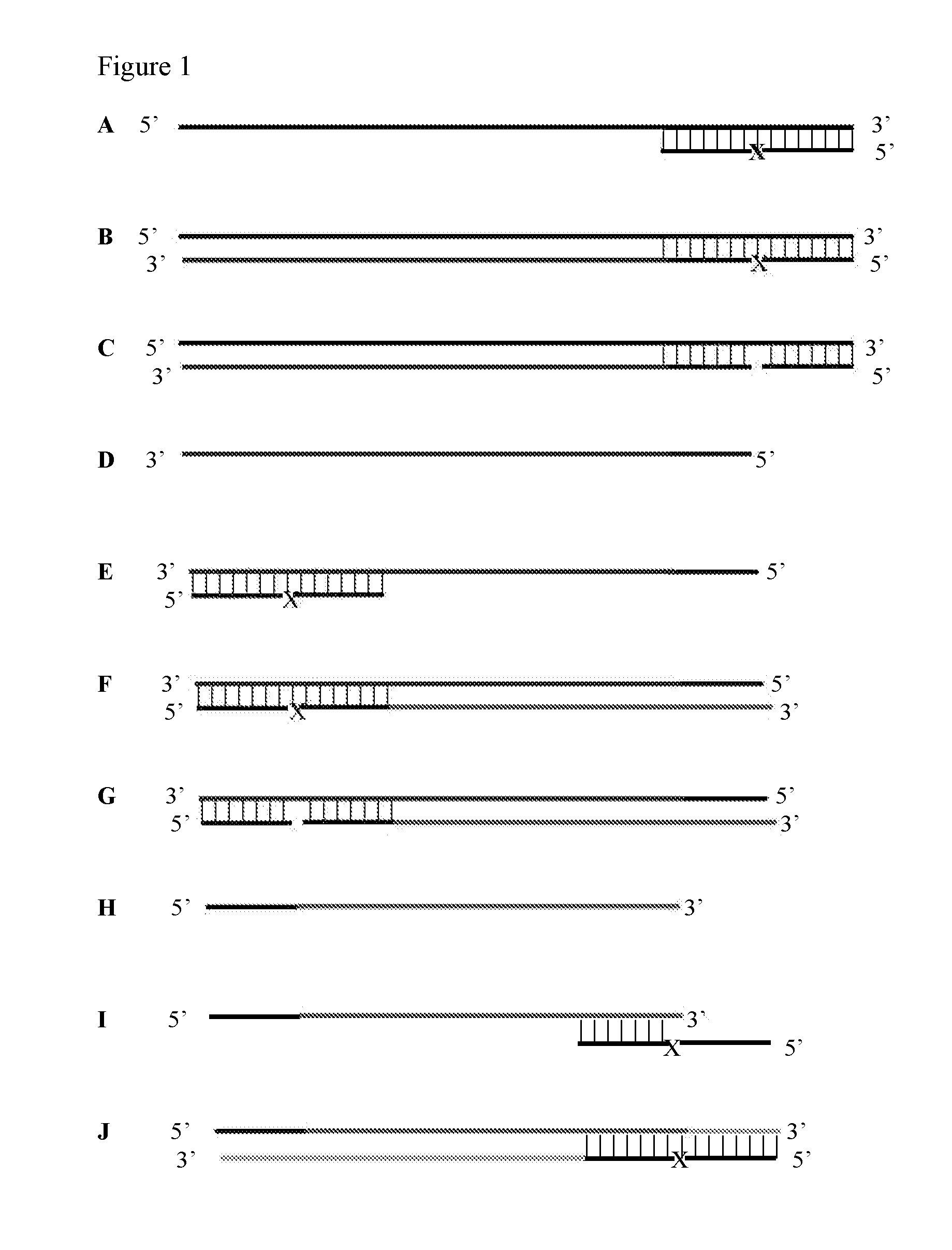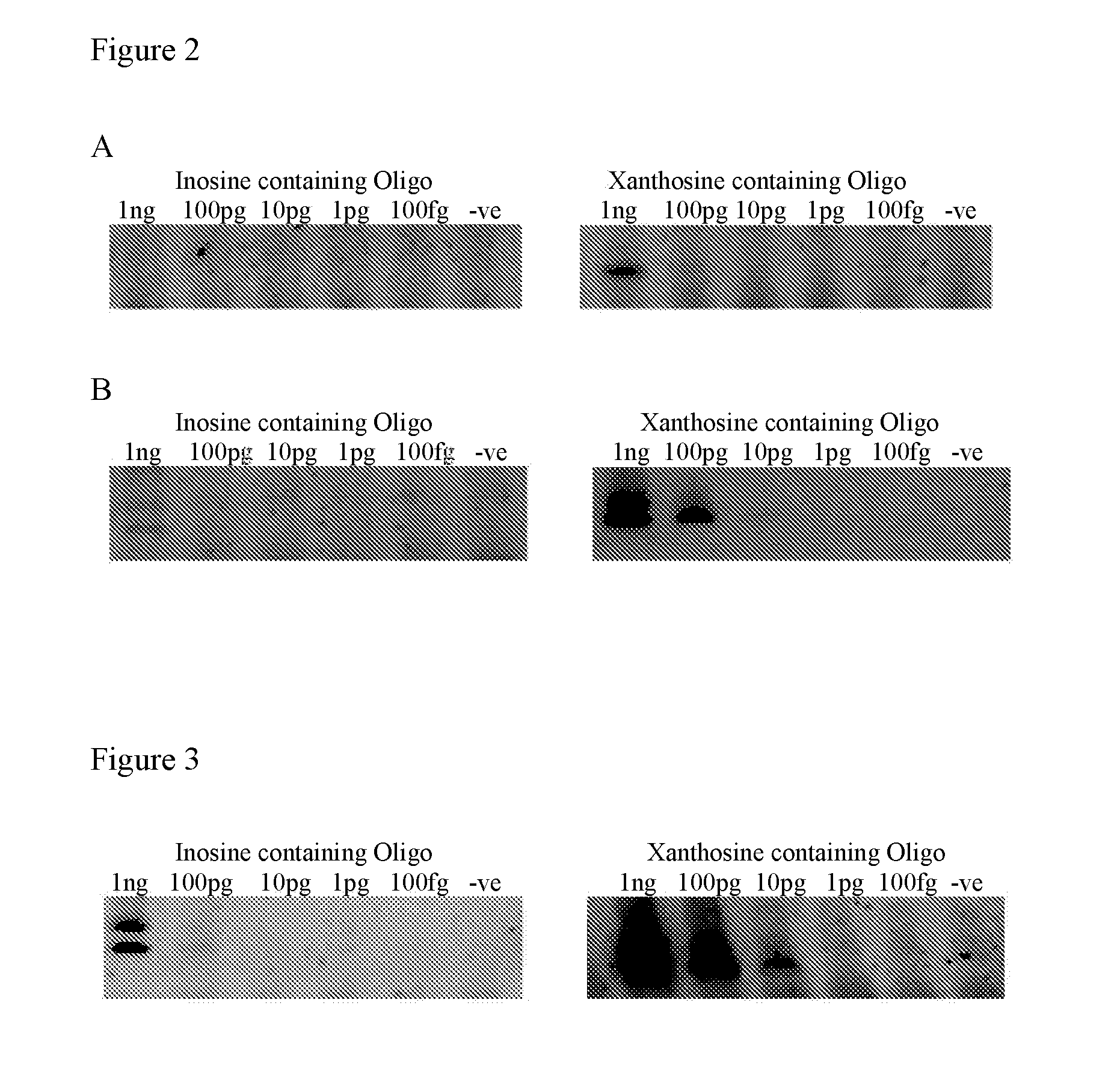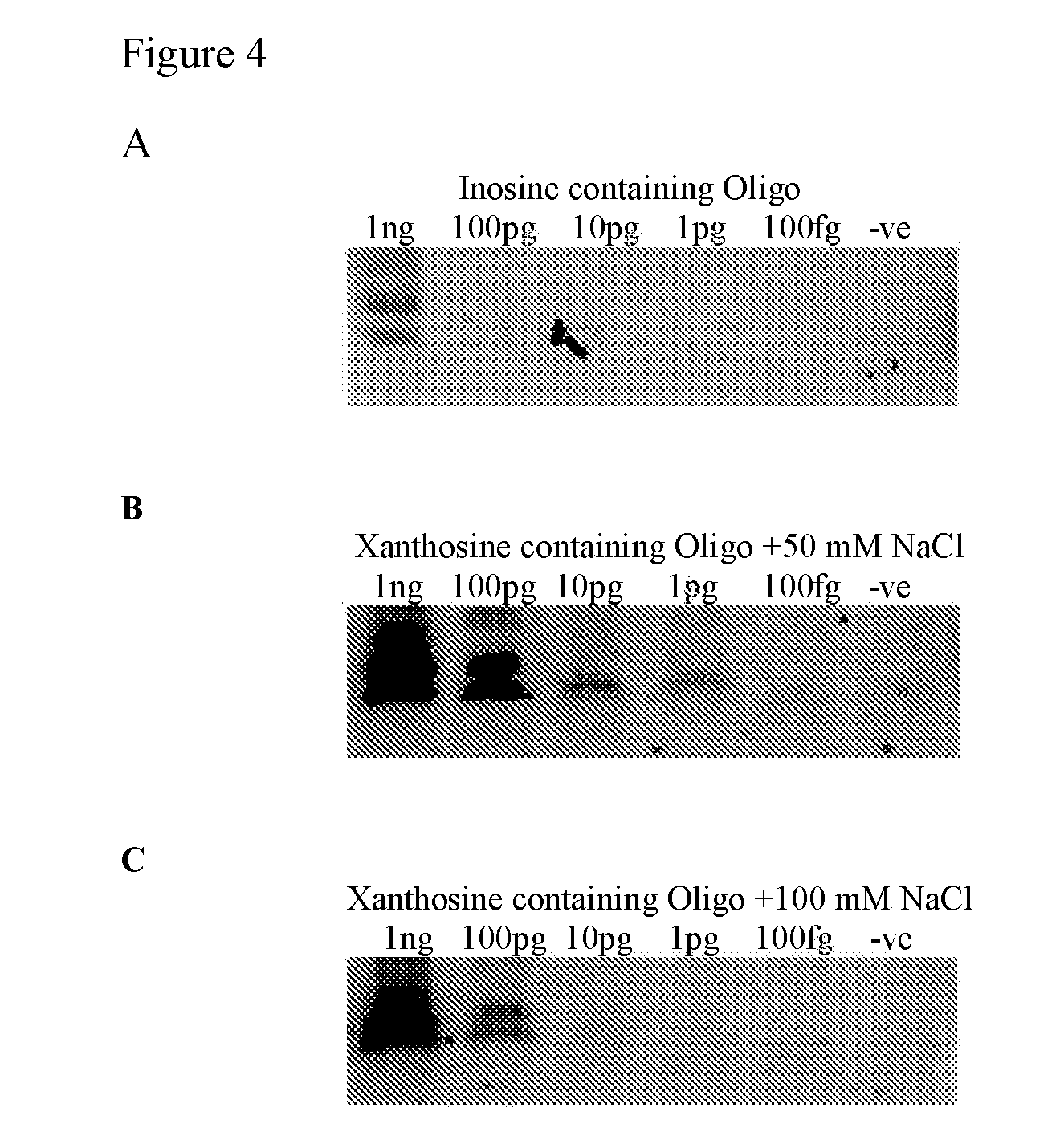Isothermal strand displacement amplification
a technology of isothermal strand displacement and amplification, which is applied in the direction of microorganism testing/measurement, fermentation, biochemistry apparatus and processes, etc., can solve the problems of inability to operate easily outside of the laboratory environment, need of a thermocycler to heat and cool the amplification mixture, and further damage to the dna
- Summary
- Abstract
- Description
- Claims
- Application Information
AI Technical Summary
Benefits of technology
Problems solved by technology
Method used
Image
Examples
Embodiment Construction
Materials and Methods
Primers
[0058]Primers can be synthesised using any commercially available DNA synthesis service or in-house DNA synthesisers. Xanthosine can be incorporated into the primer at any position using standard phosphoamidite synthesis technology.
Enzymes
[0059]The enzyme that recognises Xanthosine in double-stranded DNA and causes a nick or excises a base in one DNA strand at or near the Xanthosine is preferably Endonuclease V (deoxyinosine 3′ endonuclease) (NEB catalogue number M0305S) or the thermostable version of endonuclease V (TMA endonuclease V) from T. maritima (Fermentas catalogue number EN0141). It will be appreciated, however, that modified or variant forms of Endonuclease V or enzymes having the functional characteristics of Endonuclease V would also be suitable
[0060]Enzymes capable of strand displacement include Klenow exo-, Bst DNA polymerase large fragment, Bca polymerase, Vent exo, Deep Vent exo-, M-MuLV reverse transcriptase, 9° Nm DNA polymerase and Phi...
PUM
| Property | Measurement | Unit |
|---|---|---|
| Temperature | aaaaa | aaaaa |
| Temperature | aaaaa | aaaaa |
| Temperature | aaaaa | aaaaa |
Abstract
Description
Claims
Application Information
 Login to View More
Login to View More - R&D
- Intellectual Property
- Life Sciences
- Materials
- Tech Scout
- Unparalleled Data Quality
- Higher Quality Content
- 60% Fewer Hallucinations
Browse by: Latest US Patents, China's latest patents, Technical Efficacy Thesaurus, Application Domain, Technology Topic, Popular Technical Reports.
© 2025 PatSnap. All rights reserved.Legal|Privacy policy|Modern Slavery Act Transparency Statement|Sitemap|About US| Contact US: help@patsnap.com



